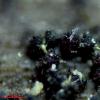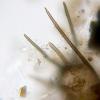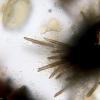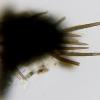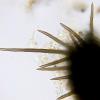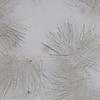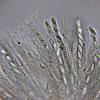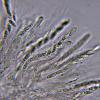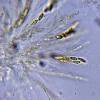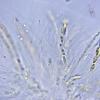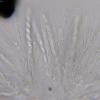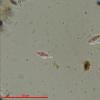
15-12-2025 15:48
 Danny Newman
Danny Newman
Melanospora cf. lagenaria on old, rotting, fallen

15-12-2025 15:54
 Johan Boonefaes
Johan Boonefaes
Unknown anamorph found on the ground in coastal sa

15-12-2025 21:11
 Hardware Tony
Hardware Tony
Small clavate hairs, negative croziers and IKI bb

15-12-2025 07:09
 Danny Newman
Danny Newman
indet. Rutstroemiaceae sp. on unk. fallen leavesMc

15-12-2025 07:05
 Danny Newman
Danny Newman
Pseudosclerococcum golindoi (det: Zotto)near Cosb

15-12-2025 11:49
 Danny Newman
Danny Newman
ITS sequences from the following two collections B

15-12-2025 12:34
 Danny Newman
Danny Newman
indet. Rhytismataceae on oak leafnear Purchase Roa

09-12-2025 12:06
 Andgelo Mombert
Andgelo Mombert
Bonjour,Je recherche l'article concernant Hypobryo
¿Capronia?
Josep Torres,
23-12-2024 14:37
Some tiny globose black ascomata found on December 1st in a beech forest, although the trunk is most likely Pinus sylvestris, as they appeared next to some specimens of Hyalocypha aureliella, a very common ascomycete on this type of wood.
Ascomata with a size of only (123.9) 129.8 - 155.1 (171.2) × (115.5) 125.5 - 149.9 (152.8) µm. not counting the hairs.
Brown hairs with thick walls, with one to four septa, measuring (25.4) 27.6 - 66.2 (90.9) µm., with a width at their base of (3.1) 3.2 - 4.6 (4.9) µm.
Asci are octosporic, inamyloid in Melzer form, measuring (63.5) 70.3 - 80.2 (84.2) × 4.9 - 6.9 (7.2) µm.
Few free spores observed, these hyaline spores, with a septum, with a constriction in it and with measurements of (9.5) 9.7 - 10.5 (11) × (3.3) 3.33 - 3.6 (4) µm., measurements practically identical to the mature spores inside the ascus, these spores inside the ascus with measurements of:
(9.1) 9.3 - 10.4 (10.8) × (3.2) 3.3 - 3.8 (3.9) µm
Q = (2.4) 2.6 - 3 (3.2) ; N = 32
Me = 9.8 × 3.6 µm ; Qe = 2.8
Given its characteristics, I am thinking of Capronia, although I cannot find any of the Keys to the genus that I have available that fit my proposal, and since I have seen something in some images that could correspond to paraphysis, I have even begun to doubt the genus.
Any suggestion from you will be well received.
Thank you very much in advance.
Greetings and Merry Christmas.
Josep Torres,
25-12-2024 12:13
Re : ¿Capronia?
Hello.
Any suggestions.
Since the Keys to Capronia are not leading me anywhere, could it be possible that with this spore morphology and its measurements it could be Helminthosphaeria?
Best regards and Merry Christmas.
Any suggestions.
Since the Keys to Capronia are not leading me anywhere, could it be possible that with this spore morphology and its measurements it could be Helminthosphaeria?
Best regards and Merry Christmas.
Thomas Læssøe,
29-12-2024 13:03
Re : ¿Capronia?
Capronia species have bitunicatae asci, so this genus is excluded since the asci in your fungus are unitunicate with a small refractive annulus. Helminthosphaeriaceae is a possibility as you imply.
happy new year
happy new year
Josep Torres,
30-12-2024 08:20
Re : ¿Capronia?
Thanks Thomas.
In any case, I'm already saving it in my files as Helminthosphaeria sp.
Happy New Year.
In any case, I'm already saving it in my files as Helminthosphaeria sp.
Happy New Year.

